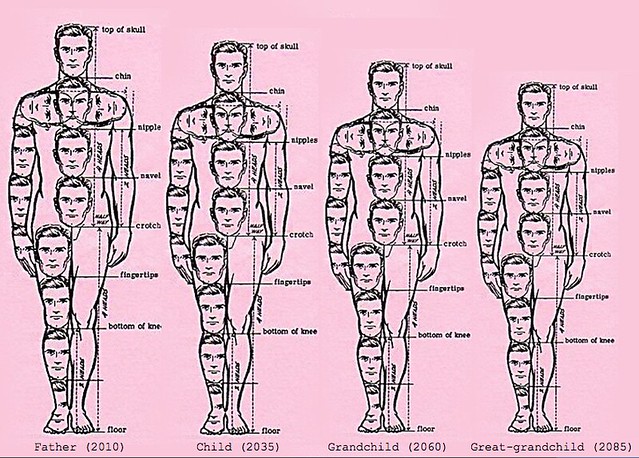Parental Height Minus 10
March 14, 2012
In an exiting paper by S. Matthew Liao, Anders Sandberg, and Rebecca Roache, it is argued that human engineering may well be a reasonable tool to achieve a sustainable relationship between the planet and its human population. One of their more intriging suggestions is the possibility to control height through Preimplantation Genetic Diagnosis (PGD). This specific form of PGD, also known as embryonic screening or preimplantation genetic profiling, involves checking genetic growth potential before in vitro fertilization, and making a positive selection based on projected small size. The authors write: ‘While genetic modifications to control height are likely to be quite complex and beyond our current capacities, it nevertheless seems possible now to use PGD to select shorter children. This would not involve intervening to change the genetic material of embryos, or employing any clinical methods not currently used. It would simply involve rethinking the criteria for selecting which embryos to implant.’ According to Liao, Anders, and Roache, the process that would enable the selection of smaller children is an accepted practice in many fertility clinics and involves no more interference with nature than the standard IVF.
If, for example, embryonic screening enables us to reduce the potential height of a child to the average height of the parents minus 10 centimeters, and the same procedure would be repeated over the next 2 generations, our great-grandchildren would reduce their height by 20% and their weight by 51%. The reduction in Human Height Pressure (Hhp) would be unprecedented.